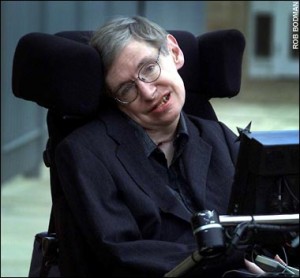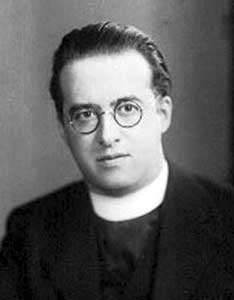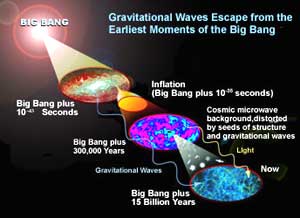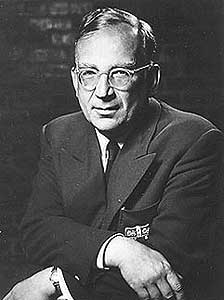A Tale of the Beginning and the End
The Secret of 2012
On the first day of the last six months of 2012 fellow gardeners moved the Gardener to turn his thoughts to the bigger garden called the Cosmos.
Only the past couple decades or less something funny, or wonderful, had been happening in the world of knowledge. Hard-nosed scientists seemed to be stepping on each other catching up with mystics, poets, and spiritual practitioners.
What may have seemed to many in past years as simple useless questions had now become rather complex and imbued with unexpected usefulness merely because scientists, too, and not only poets and mystics, got into the act propounding these questions.
So, now, when did the world start? How did it come about? And is it really coming to en end half a year from now – on 21st December 2012? [What, end of the world again?]
To reiterate, the Gardener is asking questions of Science – not only of Poetry and Mysticism. This will then be just a first seed of many that fellow gardeners may want to plant wherever they want to.
A Beginning to Everything?
There was a beginning to everything. They are sure about it. Or are they really? If so, do they know when? In fact, yes, they’ve figured it out at last. The beginning was 13,700,000,000 years ago – (13.7 billion years). Time had a beginning and there is one

From www.theness.com STEPHEN HAWKING
alive today that has written a “brief history” of it –Stephen Hawking, the man associated in scientific prominence with Albert Einstein and Isaac Newton.
If the universe had a beginning, what happened before then? A Northern African fifth century philosopher, St. Augustine of Hippo, replied quite simply that time has no meaning before the beginning of the universe.
It is amazing what science is telling us about the time we so easily waste and which as quickly runs out on us. Consider this: compared to cosmic time, the human life span is such a fleeting moment. Many understandably thought that time always was – without beginning and without an end. However, the evidence of Science points to the fact that the universe had a beginning, though scientists have no consensus yet whether it will have an end.
Now consider this too: compared to human lifetime, cosmic time is very long so that it often looks static and unchanging. Science again cautions against common sense because in fact the universe is dynamic, moving, rapidly expanding, and changing. To look at the universe now is really to look back in time. The distant objects we see tonight are no longer there. Light left them a long time ago – in the case of some, millions of years ago – to reach us at the present time.
The known Universe is a 100,000 billion, billion miles in diameter. Its sheer size is just too much. Even our little galaxy, the Milky Way, is so wide that light, traveling at 300,000 kilometers a second, takes 100,000 years to cross it. Light from distant galaxies takes millions of years to reach us.
And, wherever you look, distant galaxies are moving rapidly away from us, showing that the universe is expanding. We look at the cosmos and see that it is not finished. What we see is a cosmogenesis – a universe in progress. Already, there are some 100,000 million galaxies observable, each with around a 100 million stars. Till Galileo invited us to look at the cosmos, we did not really quite know what the words “big,” “huge,” “immense” really meant.
George Lemaitre – a Belgian priest-scholar

From www.media.radiosai.org -LEMAITRE
George Lemaitre was the first to propose in the mid-1920s what came to be known as the Big Bang theory to describe the beginning of material reality or the cosmos or the universe – all that is.
The universe, whose vastness we have just seen in part, is expanding, had a point of departure. It was not always there. It had a beginning – from nothing, or almost nothing.
“Almost nothing…” if vastness can boggle our minds, smallness may even be harder.
For instance, noted the popular writer Bill Bryson in his A Short History of Nearly Everything, no matter how hard you try you will never be able to grasp just how tiny a proton is. Even a thousandth part of a speck of dust can hold something in the region of 500,000,000,000 of these protons!
Now shrink one of those 500 billion to a billionth its normal size – if you can imagine the unimaginable – and squeeze into it the vastness of the cosmos as we’ve just seen it in part-and we’re ready to understand a bit how the Big Bang or the Great Flaring Forth started – at a moment known to scientists as a singularity of no space-time or in their language: “t = 0”.
Almost all scientists thought that the universe was infinite in age and constant in its general appearance. But this priest scientist thought otherwise. With the Big Bang, he said, there was “a day without yesterday.”

*media.radiosai.org
Religion, mysticism and poetry aside, today it is the unshakable observation of Science that what she calls the Cosmos did in fact have a beginning. There are many ways of knowing truth, of reaching reality…many kinds and degrees of knowledge. In the end, however, different as they are, they should not be contradictory because of the unity of truth.
‘There is no conflict between religion and science,’ Lemaitre used to tell his audiences over and over again. To gardeners, his view is interesting and important not because he was a Catholic priest, not because he was one of the leading mathematical physicists of our time, but because he was both.
Journey to the Dawn of the Universe

From media.radiosai.org GAMOW
Today scientists are taking an incredible journey to the dawn of the universe. George Gamow, a Russian astrophysicist, had said that if the Big Bang theory were true, we should be able to look deep into space and find some cosmic background radiation left over from that original flaring forth most probably reaching us now in the form of microwaves.
On that advice, Princeton scientist Robert Dicke and his team started looking but got scooped by two astronomers who were not looking at all, just complaining: Arno Penzias and Robert Wilson – in the mid-1960s. While using the antennae of Bell Lab in New Jersey they experienced this steady steamy hiss, a persistent background noise that made any experimental work impossible and could not be tracked down at all. Following the proverbial “to make a long story short” the two got the Nobel for their complaints.
And another two, John C. Mather and George F. Smooth designed the Cosmic Background Explorer satellite that was launched in 1989 to study this haze of microwave radiation that was thought to be a remnant of the Big Bang that started the universe – for which they also got the Nobel.
As a result we now have – NASA can now give us real pictures of the baby cosmos – …a mere 379,000 years away from the Big Bang. In other words, NASA can give us real pictures of things more than 13 billion years old, of globs of hydrogen clumped together and igniting into stars over a period of time, real pictures of stars and galaxies colliding and collapsing and giving birth to other stars, and to systems like our solar system. And you can reach all this from your nearest computer.
Only a both-and, no either-or
Our forebears, like us, looked at the world around them and wondered. Hardly anyone doubted that the cosmos and they with it were not an accident but an evolving product of an evolutionary process that had a design. “In the beginning was the Word…”

Pope Benedict XVI (fjp2.com)
There is a unity of the truth of science and religion, the present Pope Benedict XVI likes to point out. Science is the only reliable way to understand the natural world but it is powerless to answer questions such as ‘what is the meaning of human existence?’ So, we should not really be saying, for instance, “creation or evolution,” “the dust of the earth or the breath of God.” There is no either-or with science and religion. There is only a both-and. They coexist because they are “non-overlapping” domains with no common ground on which to clash. This is the garden point of view.
Less than a decade ago, before he became the most public spiritual leader around, Cardinal Ratzinger (current Pope) taught rather clearly:
“According to the widely accepted scientific account, the universe erupted 14 billion years ago in an explosion called the ‘Big Bang’ and has been expanding and cooling ever since.
“Later there gradually emerged the conditions necessary for the formation of atoms, still later the condensation of galaxies and stars, and about 10 billion years later the formation of planets.
“In our own solar system and on earth (formed about 4.5 billion years ago), the conditions have been favorable to the emergence of life. While there is little consensus among scientists about how the origin of this first microscopic life is to be explained, there is general agreement among them that the first organism dwelt on this planet about 3.5 – 4 billion years ago.
“Since it has been demonstrated that all living organisms on earth are genetically related, it is virtually certain that all living organisms have descended from this first organism. Converging evidence from many studies in the physical and biological sciences furnishes mounting support for some theory of evolution to account for the development and diversification of life on earth, while controversy continues over the pace and mechanisms of evolution.” (Paragraph 63, from “Communion and Stewardship: Human Persons Created in the Image of God,” plenary sessions held in Rome 2000-2002, published July 2004)
It is good to know from Science that, after having recalculated the age of the cosmos and absorbed the fact of evolution, after seeing that we are made of the same atoms that make up the stars, we dare to guess the immensity of the symphony we are part of.
We bravely face the fact that survival on Earth could be surprisingly tricky, again as Bryson loved to point out. Science reminds us that of the billions of species of living things that have existed since the first organism almost 4 billion years ago, 99.99 per cent are no longer around. The process of evolution has been very good at promoting life but even more effective in extinguishing it.
Well, to be where you and I are now, over the past 3.8 billion years we have changed a lot many times over, science says. We have abhorred oxygen and then doted on it; we have grown fins and limbs, laid eggs; we have flicked the air with a forked tongue, been slick, been furry; we have lived underground, lived in trees; we have been as big as a deer and as small as a mouse, and a million things more. The tiniest deviation from any of these morphing and we may now be some other species somewhere else. Is not our DNA 98.50% identical with the chimpanzees’? Quite so.
And look again: we are older than the crumbled cities whose dust we walk on when going on tours abroad to ancient lands. We began as a mineral, emerged into plant life and into the animal state, and then into being human.
Re-member, we are part of the universe’s wild and dazzling dream. In the words of the author of The Universe Trilogy:
-Every cell in our body is packed with hydrogen, made when the universe was born;
-Our bones are hardened with calcium made by stars, before even Earth was;
-Our backbone was fashioned by fish;
-Reptiles built the deepest part of our brain;
-The love we feel for another deepened inside the very first mammals;
-Our awe-filled wonder began on starry nights around campfires,
long, long ago…in a long evolutionary journey that has
brought us where we are NOW.
St. Paul was most struck with what mystics called the divine self-emptying. The almighty “maker of heaven and earth, of all things, seen and unseen” deliberately became nothing. “(S) He” became the stuff all reality is made of and started a big bang of an evolution from that nothingness.
The Bible & Science: different language, same message
| Time Frame | Bible | Science | Time Frame |
| First Day | “Let there be light” | Big Bang | 13.7 to 13.3 Billion years |
| Second Day | Creation of Heavens, heavenly bodies | Galacticclouds, supernovas, galaxies, constellations, stars | 12.5 B years, continuing |
| Third Day | Creation of Earth | Birth of thesolar system of Earth | 5 B year |
| Fourth Day | Creation of Plants | First plant cell appears | 4 B years |
| Fifth Day | Creation of Animals | First animal cell appears | 2 B years |
| Sixth Day | Creation of “Man” | Hominids to Homo Sapiens Sapiens | 2.6 Million years to 40,000 years |
| Seventh Day | God rested | Civilization, Era ofthe Human | 11,000 years to present: 10000 – agriculture; 300 – industrial; 50 – information. |
The Secret of 2012 and a New World Age
Modern science looks at the universe and sees great waves of energy pulsing across the Cosmos, making time merge with the space it travels through, moving scientists to use the term space-time.
 They also see these waves of time repeat as cycles within cycles. “Every 5,125 years,” said Dr. Gregg Braden, summing up the views of indigenous peoples and modern science in his new book Fractal Time, “the earth and our solar system reach a place in their journey through the heavens that marks the end of precisely such a cycle. With that end, a new world age begins. Apparently, it’s always been that way.”
They also see these waves of time repeat as cycles within cycles. “Every 5,125 years,” said Dr. Gregg Braden, summing up the views of indigenous peoples and modern science in his new book Fractal Time, “the earth and our solar system reach a place in their journey through the heavens that marks the end of precisely such a cycle. With that end, a new world age begins. Apparently, it’s always been that way.”
Thus, “we’re living the end of time. Not the end of the world,” Dr. Braden emphasizes, “but the end of a world age – a 5,125 year cycle of time – and the way we’ve known the world throughout that time. The present world age began in 3114 BC and will end in A.D. 2012,” December 21st of this year to be exact.
And, “who said so?” Indians writing the Mahabharata, indigenous American peoples like the Aztec and the Maya, and now modern cosmologists – scientists who study the origin and history of the universe. Of course, it’s only quite recently that modern scientists have made sense of the meaning of a world age, and they have done so only now because of technology, or the lack of it.
“More than 51 centuries ago,” going back to Dr. Braden, “our ancestors did their best to inform and warn us of what they knew would be an era of powerful transition in a future that they could only imagine in their dreams. That era is now.” In the past, world age endings have triggered cataclysmic shifts that changed the face of the earth and altered entire civilizations. Is 2012 –21-12 ushering in an era of chaos and destruction or a thousand years of peace and cooperation or both one after another?
The gardeners are in discussion and we would like to report again sometime soon.
FINIS.
Charles Avila – The Gardener